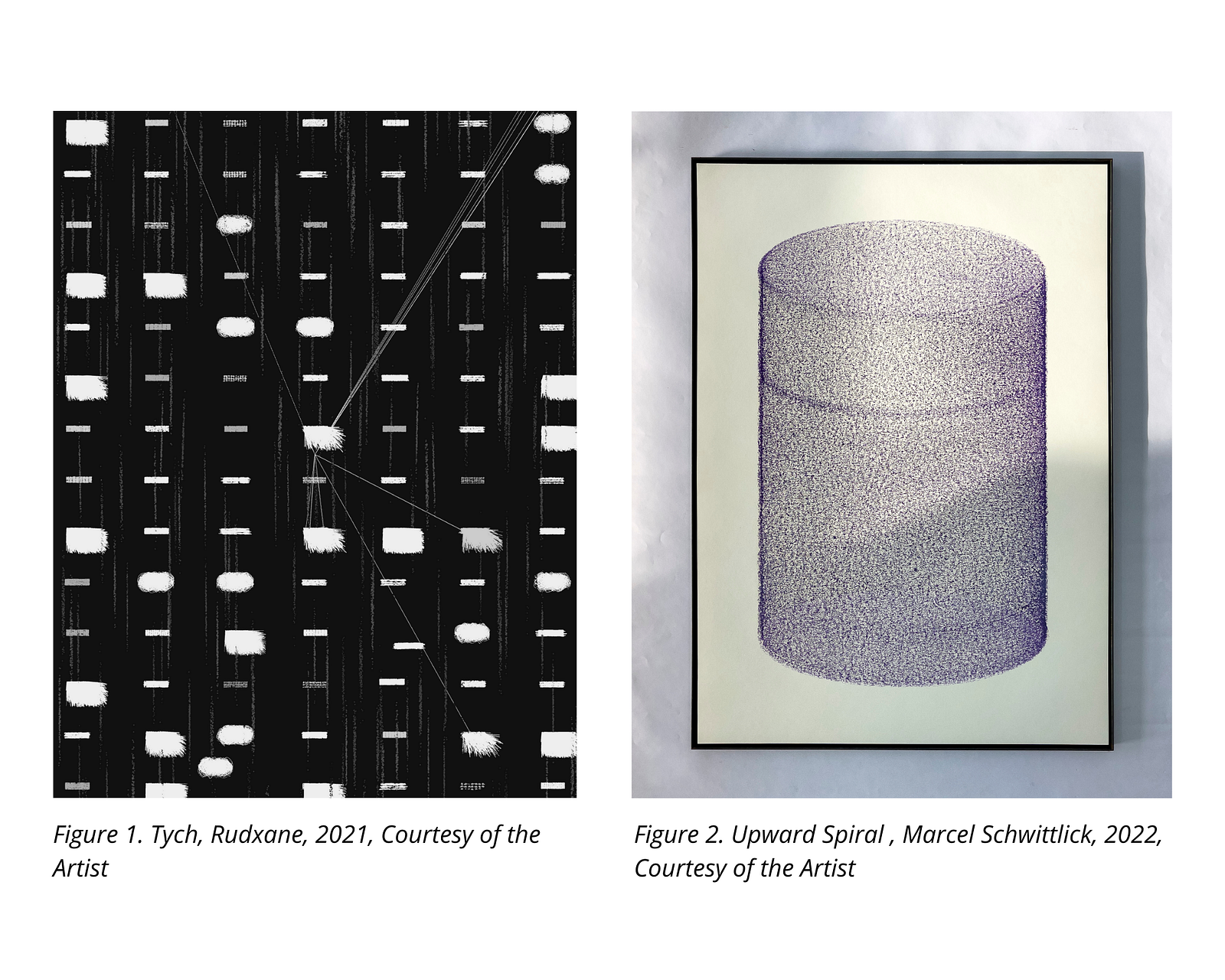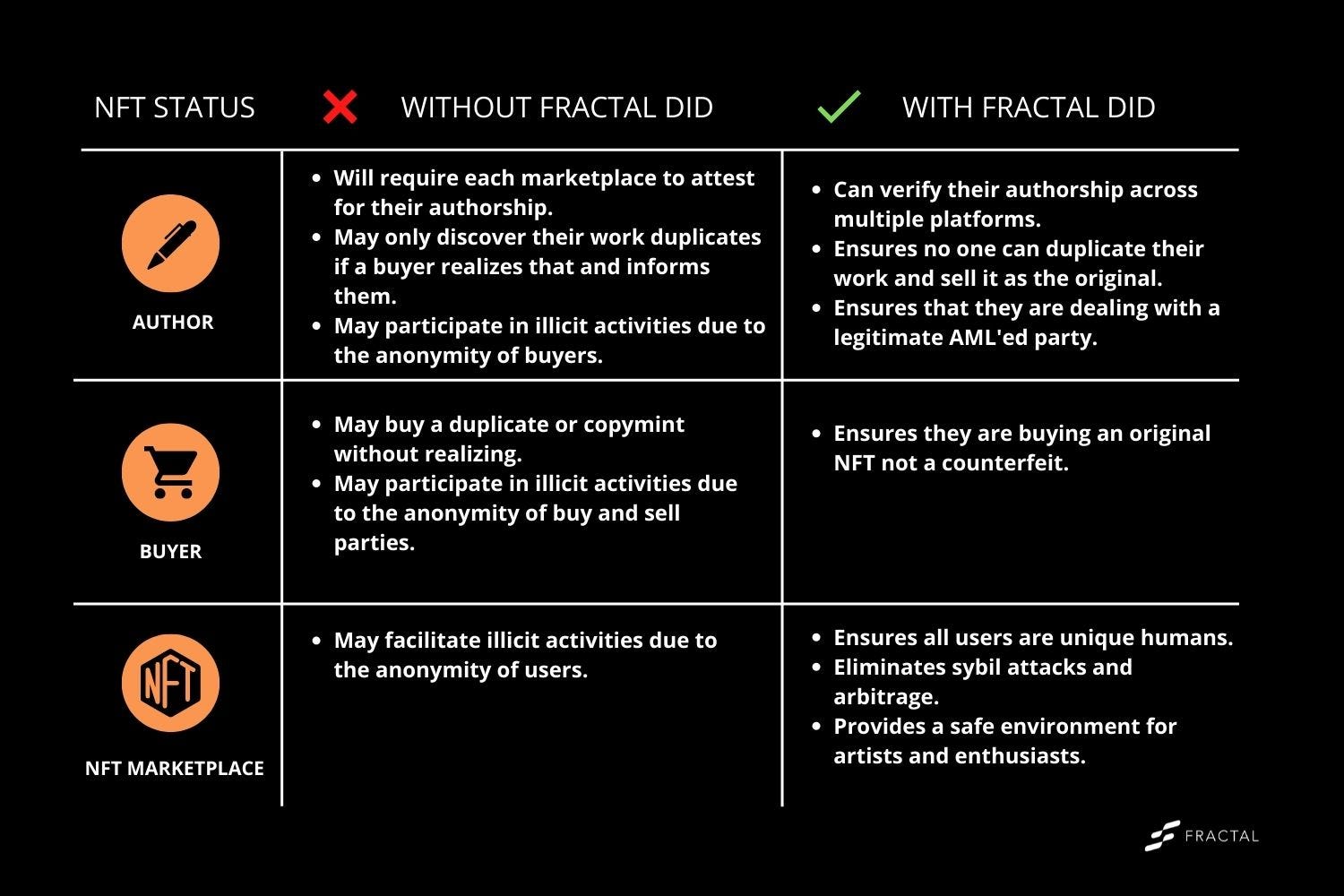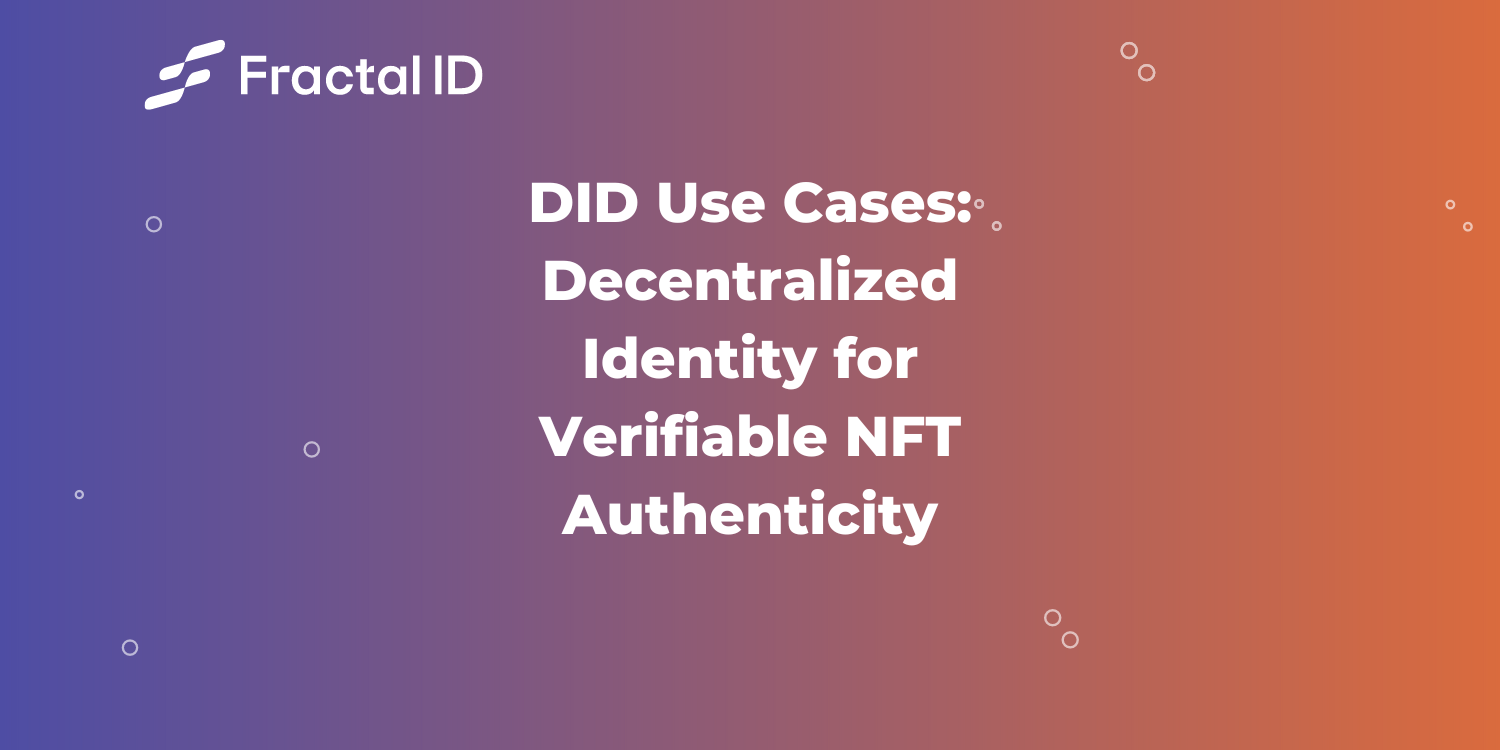With rising interest in blockchain technology and digital artwork, the NFT market has seen significant growth in the past 2 years, and is expected to grow by ±$147B from 2021 to 2026 at a CAGR of 35.27%. However, there are some challenges, such as copyright infringements and using NFTs for money laundering, that are compromising the safety of NFT marketplaces, hindering artists from participating, and standing in the way of this growth.
In this article, we explore how leveraging decentralized identities can tackle these challenges and provide NFT creators with better ways to protect their assets’ copyrights.
What are NFTs and what does it mean to buy an NFT?
Non fungible tokens (NFTs) are digital assets stored on a blockchain that certifies their uniqueness and non-interchangeability. NFTs contain data, recorded on blockchains, smart contracts or IPFS, about digital or physical assets. For example, one NFT can be a representation/token of a digital artwork (See figure 1), whereas another NFT can represent a physical painting hung up on your wall (See figure 2). The ownership of NFTs can be transferred, allowing users to buy, sell, and exchange them.

Buying an NFT simply means that the buyer owns the original digital asset, much like owning an original physical painting.
However, as NFTs are digital assets, whether they represent digital or physical assets, that means that a user can duplicate the JPEG images associated to the NFT to use as their own, or even sell a “copy” of this digital representation claiming it is the original and the buyer may never be able to know that.
Tech giant, Twitter, is trying to combat the trend of people saving the JPEGs associated with NFTs and using them as profile pictures. Twitter is enabling this by allowing NFT owners to link their NFT-associated wallets to verify their ownership of the NFT before using it as a profile picture. However, these attempts to add a some identity layer to NFT ownership don’t necessarily reflect the authenticity of the NFT, as they are not linked to the artists themselves but the current owner.
Here’s where NFT challenges manifest.
The challenge of NFT copyright infringement
There are numerous stories of NFT copy infringements, such as the case where an NFT project called Phunky Ape Yacht Club (PAYC) copied the artwork of the original Bored Ape Yacht Club, mirrored it, and sold it for ±$1.8M. Or the case where the 12-year-old Benyamin Ahmet created an NFT project called “Weird Whales” copying it directly from another project called “Pixel Whales”. Both these cases constitute copyright infringement as derivative works.
This issue arises because as long as the buyer can confirm the original selling account is linked to the artist (which is often “verified” by the platform) then the buyer can be sure that the purchased piece is authentic, no matter how many times it has changed hands. What the blockchain doesn’t tell the buyer, though, is whether that piece was merely a copy of someone else’s copyrighted work — rendering that purchase worthless and exposing the buyer to significant legal consequences if it’s resold.
Tackling authenticity challenges with decentralized identities
NFT creators can leverage decentralized identities as a way to verify the authenticity of their work by creating verifiable credentials that prove the identity/profile of who minted the NFT, and are reusable on multiple platforms.
For example, an artist can mint an NFT and display it on an NFT marketplace to sell it. In order to claim the authorship and ensure that no one can copy their artwork and sell it, the artist can issue verifiable credentials about the NFT, including their signature, their website, the blockchain they used to mint it, and/or any attribute that proves their identity.
Adding an identity layer to NFTs is beneficial for the author, the buyer, and the NFT marketplace such that:
- The artist ensures no one can duplicate their work and sell it claiming that they are the original artist.
- The buyer can verify that what they are buying is an authentic piece.
- The NFT marketplace can become a safe environment for real, authentic individuals buying and trading NFTs on the platform.
Moreover, the NFT itself will have a robust verifiable authenticity credential that travels across different marketplaces and from one owner to another. This eliminates the need for each marketplace to attest for the authenticity when a creator lists their NFT on it.
Fractal ID decentralized identity for NFT
Fractal ID is an identity verification platform, ranging from human uniqueness for sybil-resistance to KYC/AML for regulatory compliance.
Artists who leverage Fractal ID to issue reusable verifiable credentials can claim authorship rights of their NFTs, even if it travels from one platform to another, or one owner to another.
On the other hand, NFT marketplaces that integrate Fractal ID into their platforms can ensure that their users are unique humans, thus avoiding sybil-attacks and arbitrage while maintaining a safe and privacy-preserving environment for their users.

